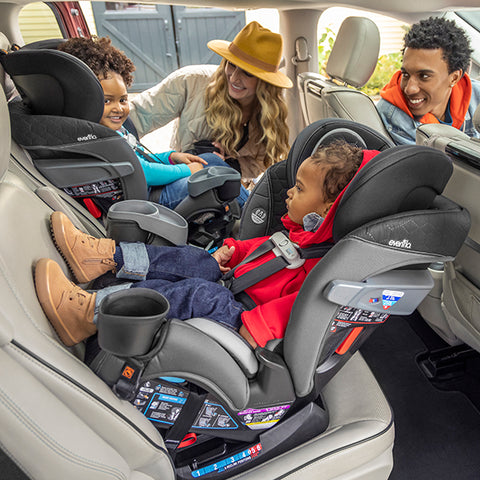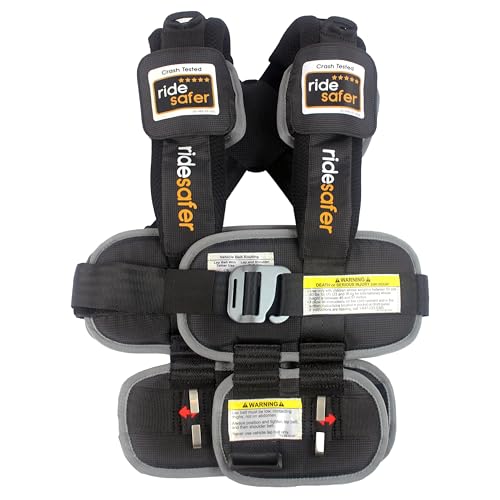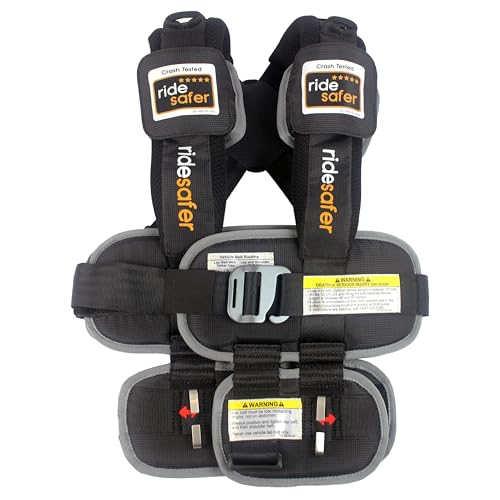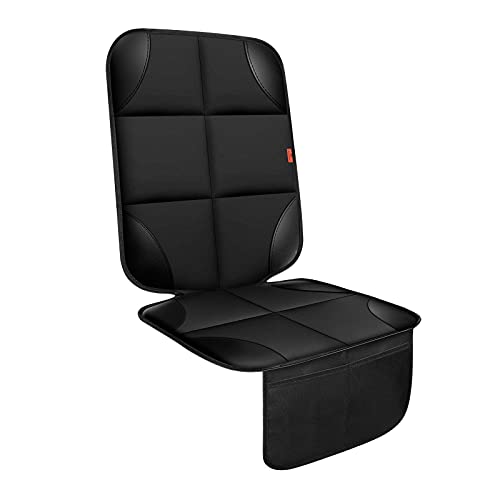Are you wondering when it’s the right time to switch your child’s car seat to a forward-facing position? You’re not alone.
Many parents face this pivotal decision, and it’s crucial to get it right for your child’s safety. Imagine the peace of mind knowing your little one is securely seated, and you’re making the best choice for their protection. This guide will take you through the essential facts and signs to look for, ensuring you’re confident and informed.
Keep reading to discover the key factors that will help you make the safest decision for your child’s car seat transition.
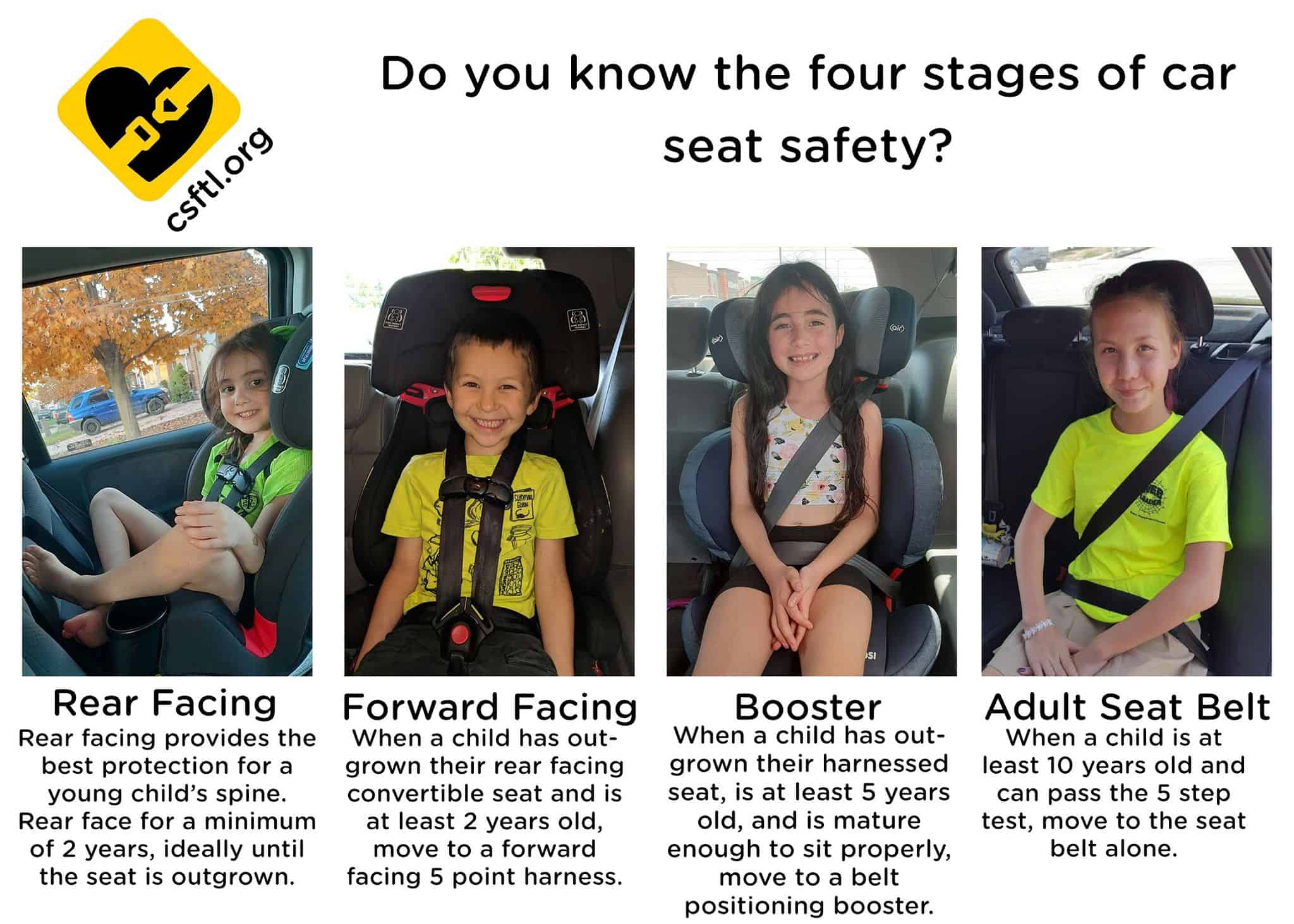
Age And Weight Considerations
Child safety is crucial when deciding on a car seat. Forward-facing seats are best for children over 2 years. Ensure your child meets the seat’s weight and height requirements for safety. Always check local regulations for specific guidelines.
Transitioning your child’s car seat from rear-facing to forward-facing is a significant milestone. It’s not just about convenience; it’s about ensuring your child’s safety on the road. Understanding the age and weight guidelines can help you make this decision confidently. Let’s dive into the key considerations that will guide you in making the safest choice for your little one.
Age Guidelines For Forward-facing Car Seats
Experts recommend keeping your child in a rear-facing car seat until at least the age of two. However, many parents may not realize that some car seats are designed to accommodate rear-facing positions for even longer. Always check the specific recommendations of your car seat manufacturer. Observing your child’s development is crucial. Each child grows at their own pace, so what works for one may not work for another. Have you noticed your child’s legs looking a bit cramped? This is a common concern but not necessarily a reason to switch to forward-facing.
Weight Considerations For Safe Transition
Weight is just as important as age when deciding to switch to a forward-facing car seat. Most rear-facing seats can accommodate children up to 40 pounds. Check your car seat’s weight limit to ensure your child is still safely within range. For example, if your car seat allows rear-facing up to 45 pounds, take full advantage of this feature. Your child’s safety should always come first, and a higher weight limit offers extended protection.
What Does Your Car Seat Manual Say?
Your car seat manual is your best friend when it comes to safety guidelines. It provides specific instructions about age and weight limits for both rear-facing and forward-facing positions. Keep this manual handy for quick reference. Have you ever misplaced the manual and felt lost? Many manufacturers offer digital copies online, making it easy to access crucial information anytime you need it.
Listening To Safety Experts And Guidelines
Safety experts, including pediatricians and road safety organizations, emphasize keeping children rear-facing for as long as possible. The American Academy of Pediatrics suggests rear-facing until the child outgrows the car seat’s limits. This advice is based on extensive research and crash test data. Wondering if you should follow general advice or trust your instincts? The best approach is to combine expert recommendations with your judgment. Trust the data, but also consider your child’s comfort and behavior in the seat. By focusing on these age and weight considerations, you can make informed decisions about your child’s safety. What are your thoughts on these guidelines? Have they changed how you plan to use your car seat? Remember, every step you take towards understanding and applying these recommendations is a step towards ensuring your child’s safety on the road.
Safety Regulations
Safety regulations play a critical role in ensuring the protection of young passengers. Parents often wonder about the right time to switch their child’s car seat to a forward-facing position. Understanding these guidelines is essential for making safe decisions.
What Are Safety Regulations?
Safety regulations are rules set to protect children in vehicles. These rules vary by region and age. They offer guidance on when to change car seats. Following them ensures the child’s safety.
Government Guidelines
Many countries have specific laws about car seats. These laws dictate age and weight limits. They ensure that children are safe during travel. Parents should be aware of these guidelines to comply with the law.
Age Recommendations
Experts suggest keeping children rear-facing as long as possible. Many recommend until age two or more. This position supports the head and neck better. It reduces the risk of injury in crashes.
Weight And Height Limits
Car seats come with weight and height limits. These limits are crucial for safety. Exceeding them can compromise the seat’s effectiveness. Parents should regularly check these limits for their child’s seat.
Manufacturer Instructions
Each car seat has specific instructions from the manufacturer. These instructions detail when to transition to forward-facing. They provide clear guidelines based on design and safety testing. Always refer to the manual for accurate information.
Professional Advice
Consulting a certified car seat technician is wise. They can offer personalized advice. Technicians ensure the seat is installed correctly. Their expertise can help parents make informed decisions.
Signs Of Readiness
Switching to a forward-facing car seat depends on your child’s weight and height. Check if they meet the seat’s limits. Ensure their head is above the top of the seat back for safety.
Changing your child’s car seat from rear-facing to forward-facing is a significant milestone in their development. But how do you know when it’s the right time? Understanding the signs of readiness can help you make an informed decision. Let’s delve into the key indicators that can guide you in this decision-making process.
Physical Development
Your child’s height and weight are crucial factors. Check your car seat’s specifications to see the maximum limits for rear-facing. Once your child exceeds these limits, it might be time to consider a forward-facing seat. You can also observe if their legs are becoming cramped or if their head is nearing the top of the seat. These physical signs can indicate that they might be ready for a change.
Behavioral Indicators
Does your child show increased curiosity about their surroundings? This is a good sign they might enjoy the new view a forward-facing seat offers. If they seem more comfortable or less fussy when sitting forward-facing during short rides, it might be time for a switch. Take note of their behavior during car rides. Are they able to keep calm and seated for longer periods? If so, they might be ready for the transition. In your own experience, have you noticed a difference in your child’s comfort during car rides? Have you ever wondered if their behavior in the car is signaling a readiness for change? These questions are worth considering as you make this important decision. Keep observing and evaluating to ensure your child’s safety and comfort on the road.
Impact On Safety
Switching a car seat to forward facing too early can impact safety. Rear-facing car seats offer better protection for a child’s head and neck. Always follow guidelines based on a child’s height, weight, and age for optimal safety.
When you’re deciding when to change your child’s car seat to forward-facing, understanding the impact on safety is crucial. As a parent, you want to ensure your child is as safe as possible during every car ride. The transition from rear-facing to forward-facing is a significant milestone, and knowing the implications can help you make an informed decision.
How Forward-facing Affects Safety
Switching to a forward-facing car seat changes the dynamics of safety in a vehicle. Rear-facing seats are designed to absorb the impact of a crash, protecting your child’s head, neck, and spine. When you switch to forward-facing, the way the seat handles impact shifts, which could affect your child’s safety in a collision.
Statistics On Forward-facing Safety
Studies show that children are safer in a rear-facing position until at least age two. Data from crash tests reveal that rear-facing car seats distribute the force of a crash more evenly across a child’s body. This helps in reducing the risk of serious injuries. Are you comfortable with your child’s current level of safety in their car seat?
Why Age Matters
Age isn’t just a number when it comes to car seat safety. A child’s bone structure is still developing, making them more vulnerable to injury. Some parents may feel pressure to switch to a forward-facing seat earlier due to convenience or the child’s size. But, prioritizing age and safety guidelines can offer your child the best protection.
Weight And Height Considerations
Besides age, weight and height are key factors in deciding when to switch. Car seats come with manufacturer guidelines for maximum weight and height limits. Exceeding these can compromise safety. Have you checked your car seat’s manual recently to ensure your child still fits within its guidelines?
Personal Experiences And Lessons Learned
I remember the anxiety I felt as my daughter approached the age where a forward-facing seat was an option. I was tempted to switch because she seemed more comfortable. However, after reading studies and guidelines, I realized the safety benefits of keeping her rear-facing longer. Does this resonate with your own experiences or concerns?
Practical Steps For A Safe Transition
When you’re ready to transition to a forward-facing seat, ensure the seat is installed correctly. Take advantage of free car seat installation checks offered by many local fire departments or hospitals. These professionals can provide peace of mind that your seat is safely secured. Are you confident in your installation skills, or could you benefit from expert assistance?
Choosing The Right Forward-facing Seat
Choosing the right forward-facing car seat can feel overwhelming. Safety is the top priority. Comfort matters too. Each seat offers different features. Some are more suitable for your child than others. Understanding these features makes the decision easier.
Consider your child’s weight and height. These factors determine the seat’s suitability. A forward-facing seat with a harness keeps your child secure. Let’s explore what to look for when choosing the right seat.
Features To Look For
Look for a five-point harness in the car seat. It provides extra safety for your child. Adjustable harnesses grow with your child. Ensure the seat meets safety standards. Look for side impact protection. It adds an extra layer of safety. Some seats offer recline options. They improve comfort during naps.
Fit And Comfort
The seat must fit well in your vehicle. Measure your car’s back seat space. Ensure the car seat fits without obstruction. Comfort is important for long drives. Look for seats with cushioned padding. Adjustable headrests add comfort for growing kids. Ensure your child can sit comfortably and securely.
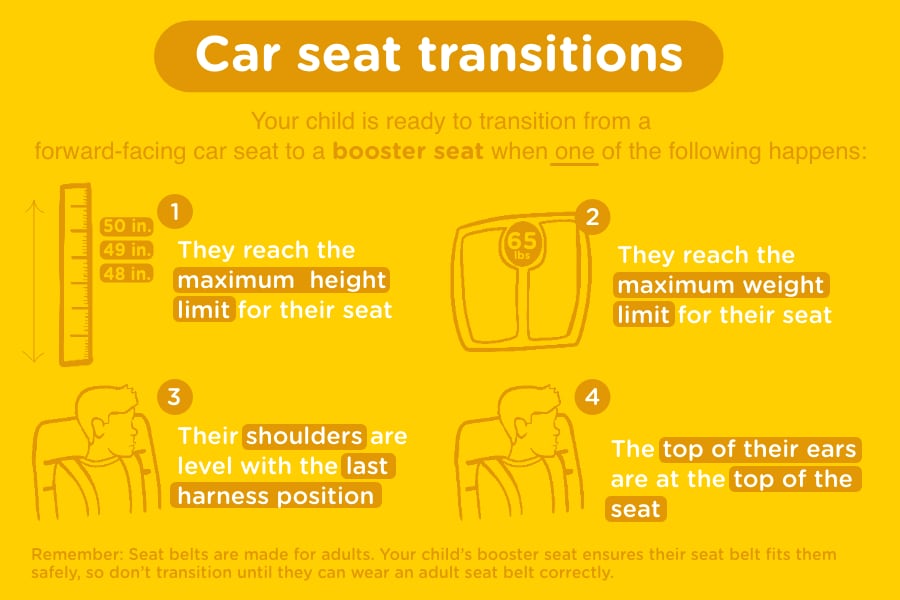
Installation Tips
Changing a car seat to forward-facing is crucial when your child outgrows the rear-facing seat. Check the height and weight limits specified in your car seat manual. Always prioritize safety by ensuring a snug fit for the harness and seat belt.
When switching your child’s car seat to forward-facing, installation is crucial for safety. Many parents find themselves second-guessing whether the seat is installed correctly. To help you feel confident, here’s a guide on how to install a forward-facing car seat effectively. These tips will ensure your child’s seat is not only secure but also positioned properly.
Correct Positioning
Begin by placing the car seat in the back seat of your vehicle. The center position is often the safest, but it may not always be feasible depending on your car model. Ensure the car seat is upright and level. Many seats come with an indicator that helps you check this. If yours doesn’t, a simple trick is using a small level tool to confirm the seat isn’t tilted. Your child’s head should be at least one inch below the top of the car seat’s shell. This prevents head injuries in case of sudden stops. Measure and adjust the seat as necessary to meet this guideline.
Securing The Seat
Use the car’s seat belt or the LATCH system to secure the car seat. It’s tempting to rush this step, but take your time to ensure it’s done right. When using the seat belt, thread it through the forward-facing belt path and buckle it. Once buckled, apply pressure to the car seat and pull the belt tight. This removes any slack and ensures a snug fit. If your car has a LATCH system, connect the lower anchors to the car seat’s hooks and pull tight. A properly installed car seat should not move more than an inch side-to-side or front-to-back. Test it by giving it a good shake. Finally, attach the top tether strap to the car’s anchor point. This adds an extra layer of security, keeping the seat from tipping forward during a collision. Double-check all connections before hitting the road. Have you ever felt unsure about your car seat installation? These tips can help alleviate that worry, making every trip a safe one.
Common Mistakes To Avoid
Parents often rush to switch car seats to forward-facing too soon. Children should remain rear-facing until they reach the car seat’s maximum weight or height limit. This ensures optimal safety during travel, reducing risk of injury.
Making the switch from a rear-facing to a forward-facing car seat is a significant milestone for you and your child. However, it’s crucial to ensure that you’re making this change at the right time and in the safest way possible. Many parents make common mistakes during this transition, which can affect their child’s safety. Let’s dive into some errors to watch out for and how you can avoid them.
1. Switching Too Early
One of the biggest mistakes is moving your child to a forward-facing seat too soon. Many parents are eager for this transition, but it’s important to remember that rear-facing is safer for a young child’s neck and spine. The American Academy of Pediatrics advises keeping children rear-facing until at least age two or until they reach the maximum weight and height for their car seat.
2. Not Following Manufacturer’s Guidelines
Each car seat comes with specific guidelines about weight and height limits for both rear and forward-facing positions. Ignoring these can compromise your child’s safety. Always read the manual and follow the instructions precisely. It might seem tedious, but these details can make all the difference.
3. Improper Installation
Car seats can be tricky to install correctly. A common mistake is not securing the car seat tightly enough. Ensure the seat doesn’t move more than an inch side-to-side or front-to-back. Many parents also forget to use the tether strap, which is crucial for forward-facing car seats.
4. Incorrect Harness Positioning
Once your child is in a forward-facing seat, the harness straps should be at or above their shoulders. Many parents accidentally leave the harnesses too low, which can be dangerous in the event of a crash. Take a moment to check the harness height each time your child gets in the car.
5. Using Aftermarket Products
Products like seat covers and strap cushions that didn’t come with the car seat can seem harmless. However, they can interfere with the seat’s safety features. Manufacturers test their products without these extras, so adding them could affect your car seat’s performance in a crash. Reflect on your own car seat transition experience. Did you double-check the manufacturer’s guidelines, or did you rely on instincts? It’s easy to overlook these details. Paying attention to these common pitfalls can help ensure your child’s safety and give you peace of mind. Have you ever considered getting a car seat check from a certified technician? They can help identify any mistakes you might have overlooked. It’s a small step that can have a huge impact on your child’s safety.
Expert Recommendations
Transitioning your child’s car seat to forward-facing is a significant step. Parents often wonder when this change should occur. Safety experts provide guidelines to ensure children’s safety during travel. Following these recommendations can prevent injuries and ensure peace of mind.
When To Transition Based On Age And Weight
Experts suggest waiting until your child is at least two years old. They should also meet the minimum weight limit specified by the car seat manufacturer. Rear-facing seats better protect young children in crashes. Keeping them rear-facing longer is safer.
Understanding Your Car Seat’s Specifications
Every car seat has unique height and weight limits. Check your car seat manual for specific guidelines. Ensure your child fits within these limits before switching. This ensures the seat provides optimal protection.
Consulting With Pediatricians
Pediatricians can offer personalized advice based on your child’s growth. They consider factors like height, weight, and developmental milestones. Consulting with them ensures your decision is informed and safe.
Observing Your Child’s Comfort And Fit
Observe if your child feels cramped in the rear-facing seat. If their legs are bent awkwardly, it might be time to switch. Comfort can impact their overall travel experience.
Staying Updated With Safety Standards
Safety standards evolve as research advances. Stay informed about the latest recommendations. Regularly check for updates from trusted sources like the American Academy of Pediatrics.

Frequently Asked Questions
When Should I Switch To A Forward Facing Car Seat?
Switch to a forward-facing car seat when your child outgrows the rear-facing seat. Check height and weight limits. Typically, this happens around age 2 or older. Always follow the car seat manufacturer’s guidelines for safety. Ensure the seat is properly installed and adjusted for your child’s size.
At What Weight Can You Put A Child In A Forward Facing Seat?
Children can use a forward-facing seat once they weigh at least 40 pounds. Ensure the seat meets safety guidelines. Always follow the manufacturer’s instructions for installation and usage. Prioritize your child’s safety by regularly checking the seat’s fit and condition.
What Happens If You Forward Face Too Early?
Forward-facing too early risks injury in car accidents. Children’s necks and spines are vulnerable. Rear-facing offers better protection. Always follow car seat guidelines for age and weight.
When To Switch Car Seat To Forward Facing?
The switch to a forward-facing car seat should occur when your child meets the weight and height limits of their rear-facing seat. Typically, this happens around the age of two. Always refer to your car seat manufacturer’s guidelines to ensure safety.
Conclusion
Switching to a forward-facing car seat is a big decision. Safety is the top priority for your child. Always check the weight and height limits of your car seat. Follow guidelines from safety experts and manufacturers. Rear-facing seats are safer for younger children.
Keep them rear-facing as long as possible. Once your child outgrows it, make the switch. Ensure the car seat is properly installed. Double-check the harness fits snugly. This small change can make a big difference. Always prioritize safety. With the right car seat, you protect what matters most.
Your child’s life.

